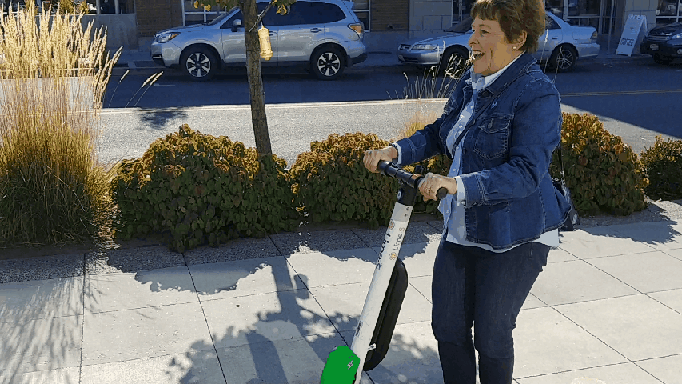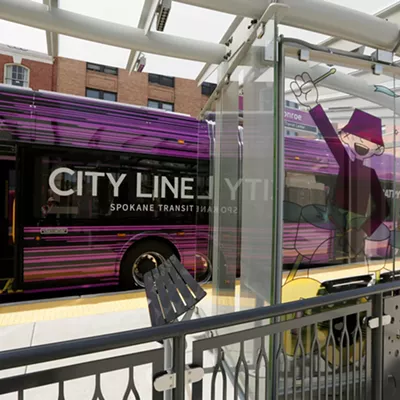
This week, we have a story about the City Council's controversial proposal to lift the bike helmet law for riders of Lime-style electronic bikes and scooters. On the one hand, you have people like City Council President Ben Stuckart, who note that if helmets were required for riding scooters, usage would decrease significantly. On the other hand, you have people like this Slate writer, who notes that she herself almost died riding an electric scooter and cites a study that tabulates over 1,500 scooter-related injuries since 2017.
The city of Spokane isn't just considering the dangers that Lime scooters could pose to their riders, however — they're also considering the dangers that Lime scooters could pose to pedestrians.
The City Council proposal would not only apply the existing prohibition against cyclist riding downtown to "shared mobility devices" like Lime bikes and scooters, it would expand the area of the no-sidewalk-riding ban to also include the section of downtown between Bernard and Division. It's one thing to have somebody zipping down the sidewalk of the suburbs at 15 miles per hour. It's another when an scooter rider comes bowling through a downtown crowd after a Knitting Factory show lets out.
But what about Riverfront Park? On one hand, Riverfront Park is packed with pedestrians. Yet, the city can't easily ban scooters from entering Riverfront Park without cutting off a crucial section of the Centennial Trail and severely hampering mobility for riders going from place to place.
City staffers' proposed solution? Set a 7 mph speed limit — not for the rider, but for the vehicle itself. They have the technology, says Brandon Blankenagel, the city's shared mobility project manager.
It's called "geo-fencing." Shared scooter companies can use GPS to determine what happens when somebody strays outside of a specific perimeter. Then, it can determine how to respond. The company could theoretically send a message to someone if they ride in a prohibited area or even deactivate the scooter entirely.
Or, you could reduce the speed.
"For instance, if we set the speed limits for 7 miles an hour [inside Riverfront Park]," Blankenagel says, "if you were entering Riverfront Park and going 15 miles an hour, you'll coast down to the allowable speed, then it will speed back up."
During last year's Lime pilot, he says, Lime brought in a batch of scooters that were temporarily capped with a speed limit.
"For a week, there 50 or 100 scooters in Spokane that would only go 10 miles an hour,"
Blankenagel says.
Lime soon remotely removed the restriction on those scooters, but the software principle is sound, he says.
"So when we talk about drawing a boundary around Riverfront Park, we can definitely do that," he says.
And eventually, he says, they may be able to go even further. He says that shared mobility companies are getting better at how much precision they have with determining a bike's location.
"As they continue to develop this, we’d like to be able to have the vehicles differentiated between being on the sidewalk and being on the roadway," Blankenagel says. It's a technological challenge — the high rise buildings downtown can interfere with the GPS satellite signals. But if the vendors are able to solve it, he says, then the city could, theoretically, allow the rentable scooters to ride on the sidewalk once more.
But only at 5 miles an hour.























